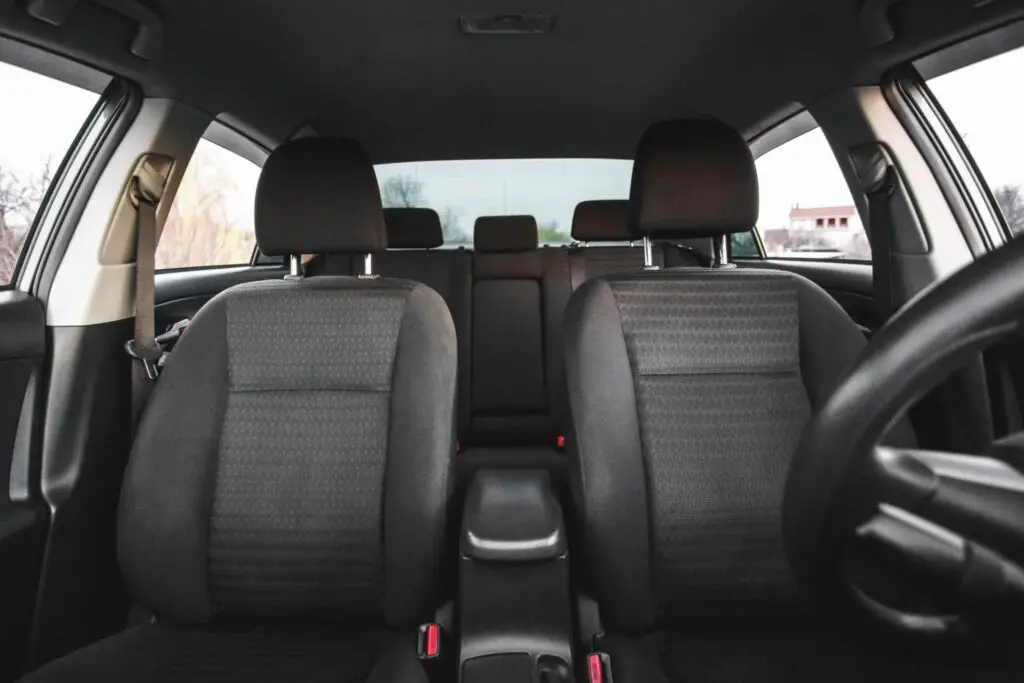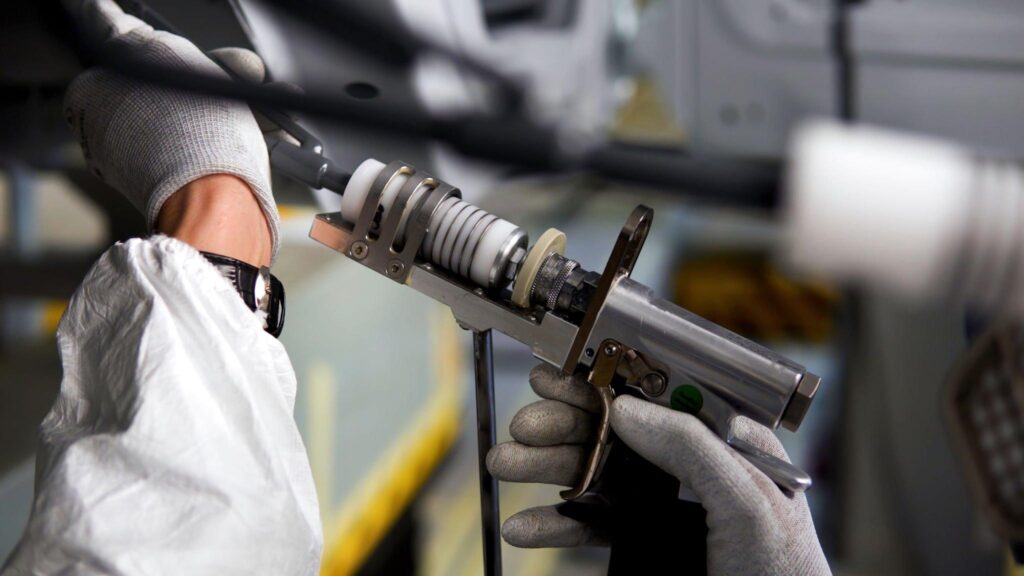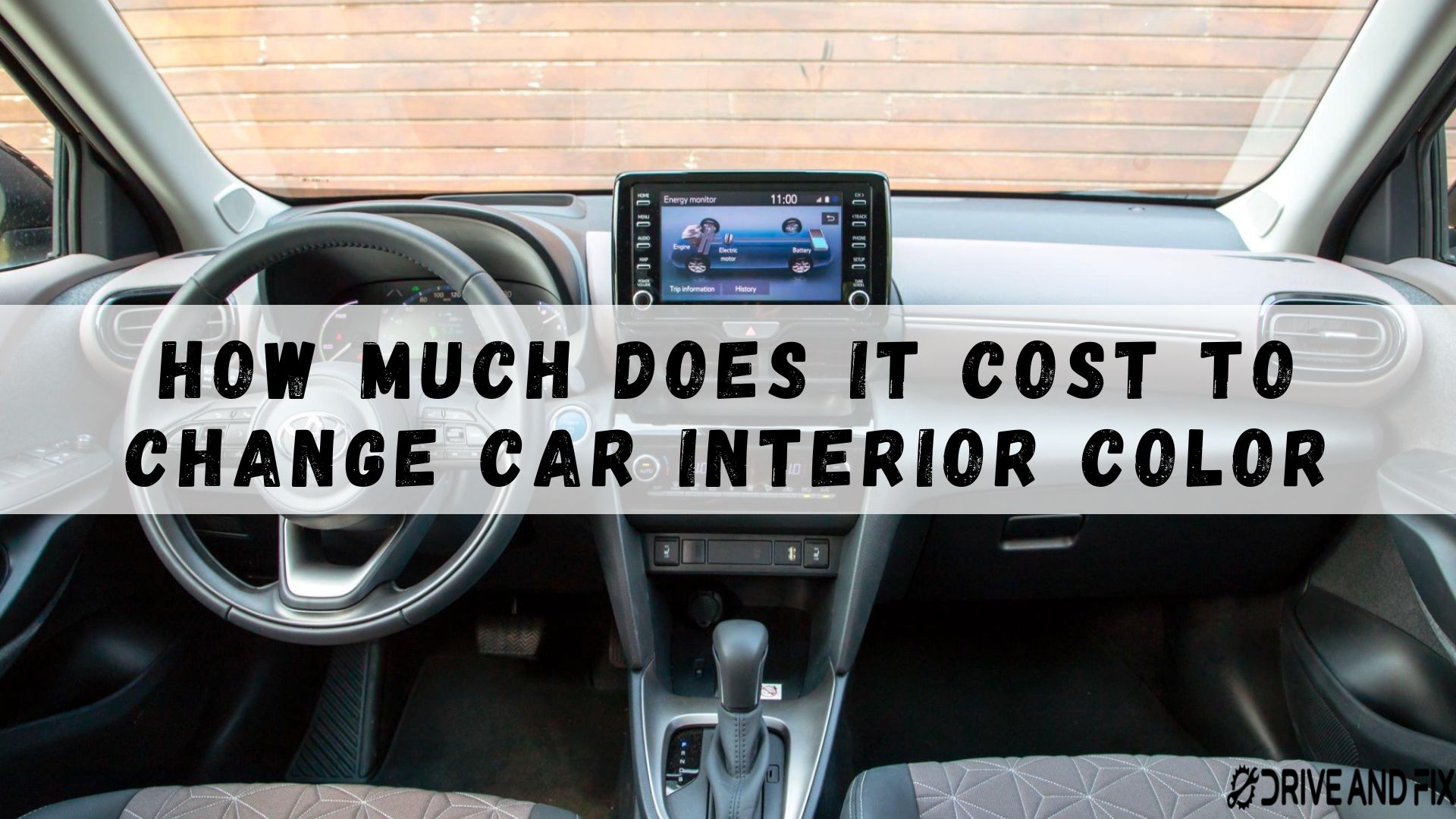Changing the interior color of your car can be a great way to freshen up its look. But how much does it cost to change car interior color? The answer depends on several factors, such as the type of car and the complexity of the job. Generally speaking, the cost can range from a few hundred dollars to several thousand.
Changing the interior color of your car can be done relatively cheaply or at a high cost, depending on what you’re looking to do. Make sure you factor in all costs before starting the project. Let’s go through this discussion to learn more about the process and its costs.
Is It Legal to Customize the Interior color of Your Car?
In most cases, it is legal to customize the interior of your car as long as the modifications do not compromise the safety of the vehicle or make it less roadworthy.
For example, you can usually change the color of the upholstery or install aftermarket seat covers as long as they do not obstruct the operation of the seat belts or airbags. You may also be able to change the dashboard or door panel trim, as long as the modifications do not interfere with the operation of the vehicle’s controls or gauges.
However, you should check with your local Department of Motor Vehicles (DMV) to see if there are any specific laws or regulations that apply to interior modifications in your area.
How Much Does It Cost to Change Car Interior Color?

The cost of changing the interior color of your car will depend on the type of car you have, the materials used, and the complexity of the job. Generally, the cost of changing the interior color of a car can range from $200 to $2,000.
For simpler jobs like replacing seat covers or changing out the carpet, you can expect to pay between $200 and $500. More complicated jobs such as installing custom leather seats or changing out the dashboard can cost up to $2,000.
When it comes to changing the color of your car’s interior, there are several options available. You can choose from a variety of fabric colors or go for a more luxurious look with leather or vinyl upholstery. You can also choose from a variety of paint colors for the dash and other trim pieces.
It’s important to note that some materials are more expensive than others. For example, leather and vinyl upholstery can be more expensive than fabric. Also, some materials may require special tools or techniques to install, which could add to the overall cost.
It’s important to consider the labor costs associated with changing the interior color of your car. Depending on the complexity of the job, you could be looking at labor costs of up to $500.
The cost of changing the interior color of your car can vary depending on the type of car you have, the materials used, and the complexity of the job. On average, you can expect to pay between $200 and $2,000 for a complete interior color change.
What to Expect When Changing Your Car Interior Color

Changing the interior color of your car can be a daunting task, but it doesn’t have to be. With the right tools, knowledge, and preparation, you can make the process of changing your car’s interior color a breeze.
- The first step is to choose what color you want to paint the interior of your car. You can choose from a variety of colors, including traditional colors like black and white or more vibrant colors like red and blue. Once you’ve chosen the color you want, it’s time to start preparing the area.
- You’ll need to remove any upholstery and trim pieces that are in the way of the painting process. This includes carpeting, seats, door panels, and any other interior components that may be in the way. Once these items are removed, you’ll need to clean the area thoroughly. This includes vacuuming, wiping down surfaces, and using a degreaser to remove any oils or dirt that may be present.
- Once the area is clean and ready for painting, you’ll need to apply a primer coat. This will help the paint adhere to the surface and give it a better finish. After the primer has been applied, you can begin painting the interior with a brush or spray gun. Make sure to use even strokes and cover all areas of the interior.
- Once the paint has been applied, it’s important to let it dry completely before you reassemble the interior pieces. This could take several hours or even days depending on the type of paint you used and the temperature of the room. After the paint has completely dried, you can reassemble the interior pieces and enjoy your new look.
Changing your car’s interior color can be a fun and rewarding experience. With proper preparation and the right tools, you can make the process easier and more enjoyable.
The Different Types of Car Interiors
When it comes to cars, the interior is just as important as the exterior. There are many different types of car interiors, from luxurious leather upholstery to high-tech digital displays.
- Classic leather upholstery – This is a timeless look that adds a touch of sophistication to any car. It’s also comfortable and durable, making it perfect for long drives.
- Modern digital display – This type of interior is becoming more popular as cars become increasingly tech-savvy. It includes a large touchscreen display that can be used to control different aspects of the car, such as climate control and navigation.
- Sporty interior – This type of interior is designed to be more performance-oriented, with sporty seats and other features that make driving more fun. It’s often seen in sports cars and other performance vehicles.
- The luxury interior – This type of interior is designed to give the driver an extra level of comfort and convenience. It includes features like heated seats, premium sound systems, and other amenities that make driving more enjoyable.
- Eco-friendly interior – This type of interior is designed to reduce the car’s environmental impact. It includes features like recycled materials, energy-efficient lighting, and other features that reduce the car’s carbon footprint.
No matter what type of interior you choose, it’s important to make sure that it fits your needs and lifestyle. After all, it’s your car, and you should be comfortable in it!
Dyeing Or Spraying Car Interior – Which Is Better?

There are pros and cons to both dyeing and spraying the interior of a car. Dyeing the interior of a car involves applying a liquid dye directly to the surface of the car’s interior materials, such as the seats or dashboard. This can be a good option if you want to change the color of the car’s interior or restore the color of faded or worn materials.
One advantage of dyeing the car’s interior is that it can be more durable than spraying. Because the dye is absorbed into the material, it can be less prone to chipping, peeling, or fading over time. Additionally, because the dye is applied directly to the surface of the material, it can be more effective at covering up blemishes or imperfections.
However, dyeing the car’s interior can also be more time-consuming and labor-intensive than spraying. It requires more careful application and may need to be reapplied in multiple coats to achieve full coverage. Additionally, dyeing the car’s interior may not be suitable for all types of materials, and some dyes may not adhere well to certain surfaces.
On the other hand, spraying the car’s interior involves applying a coating of paint or finish to the surface of the materials. This can be a good option if you want to give the car’s interior a completely new look or finish.
One advantage of spraying the car’s interior is that it can be quicker and easier than dyeing. It can also be more versatile, as you can choose from a wide range of colors and finishes. Also, spraying may be more suitable for certain types of materials, such as plastic or vinyl, which may not absorb dye well.
However, spraying the car’s interior can also have some disadvantages. It may not be as durable as dyeing, as the coating can chip, peel, or fade over time. On the other hand, spraying may not cover blemishes or imperfections as well as dyeing, and it may require more frequent touch-ups to maintain its appearance.
Ultimately, the best option for you will depend on your specific needs and preferences. If you want a more durable, long-lasting finish that can cover up blemishes and imperfections, dyeing may be the better choice. If you want a quick and easy way to change the color or finish of your car’s interior, spraying may be the way to go.
What to Do If You Have a Pre-existing Car Interior
If you have a pre-existing car interior, you may be wondering what to do with it. While it may feel like a daunting task, there are plenty of ways to make the most of your existing car interior.
The first step is to make sure that your car is clean and in good condition. This will help to ensure that you are able to make the most of any modifications that you make. Once your car is clean, you can begin to work on customizing your interior.
One of the most popular options for customizing a pre-existing car interior is to install aftermarket accessories. This could include new floor mats, seat covers, or even a new audio system. Installing these types of accessories can help to give your car a new look and feel without having to invest in a complete overhaul.
Another option for customizing your car interior is to add a custom paint job. This can be done either professionally or DIY, depending on your skills and budget. Professional paint jobs can be quite expensive, but they can also give your car a unique look that can’t be found anywhere else.
Finally, you can also consider investing in a new car interior design. This could involve installing new seats, floor mats, or even custom upholstery. Investing in a new car interior design can help to make the most of your existing car interior and give it a completely new look.
No matter what you decide to do with your pre-existing car interior, it’s important to remember that it’s all about personal preference. Take the time to explore all of your options and find the one that best suits your style and budget. With a bit of creativity and effort, you can make the most of your existing car interior and give it a complete makeover.
The Pros and Cons of Changing Your Car Interior Color
Changing the color of your car interior can be a great way to give your vehicle a fresh new look. But before you go ahead and make any changes, it’s important to understand the pros and cons of changing your car’s interior color.
One of the biggest pros of changing your car’s interior color is that it can significantly improve the look and feel of your vehicle. A new color can make it look more modern and stylish, and it can also help to protect the interior from fading due to sun exposure.
Although, there are some potential downsides to changing your car’s interior color. For one, it can be expensive. You’ll need to purchase new upholstery, carpeting, and other materials in order to get the look you want. Additionally, the process can be time-consuming as you’ll need to remove existing materials and install new ones.
Another potential downside is that the color may not match the exterior of your car. This could be an issue if you’re looking to sell your vehicle in the future, as buyers may be put off by the mismatched colors.
It’s important to note that changing your car interior color can void your warranty. If you’re planning on making any major changes to your car, it’s best to check with your manufacturer first to make sure that it won’t affect your warranty.
Overall, changing the color of your car interior can be a great way to give your vehicle a fresh new look. But there are some potential downsides to consider before you make any changes. Be sure to weigh the pros and cons carefully before making a decision.
FAQ About Cost to Change Car Interior Color

How Much Do Dyeing Leather Seats Cost?
The cost of dyeing leather seats will depend on the condition of the seats and the type of dye used. On average, you can expect to pay anywhere from $200 to $800 or more to dye leather seats. This will also depend on whether you hire a professional to do the job or do it yourself.
Can I Paint The Dashboard?
Yes, it is possible to paint the dashboard of your car. However, it is important to choose a paint that is specifically designed for use on automotive surfaces and to follow the manufacturer’s instructions carefully. The cost of painting a dashboard will depend on the type of paint and the amount of labor involved.
What Interior Color Can I Change To?
The color you can change your car’s interior to will depend on the type of dye or paint you use. Most dyes and paints are available in a wide range of colors, so you will have plenty of options to choose from. It is important to note that some dyes and paints may be more suitable for certain materials than others, so you may need to consider this when selecting a color.
How much does it cost to repaint an interior?
The cost of repainting the interior of a car will depend on the size of the car, the condition of the interior, and the type of paint used. On average, you can expect to pay anywhere from $500 to $1,500 or more to repaint the interior of a car. This will also depend on whether you hire a professional to do the job or do it yourself.
The Bottom Line
The cost of changing the interior color of your car will depend on several factors such as the make and model of your car, the type of material used to upholster the interior, and the complexity of the job. It’s important to take all these factors into consideration when deciding on a budget for your project.
Changing your car’s interior color is a great way to customize your vehicle and make it look brand new. So be sure to take the time to read this guide and decide if changing your car’s color is the right decision for you.
Now If you plan or interested on applying clear coat on your car, keep reading to learn how to do it correctly! Read: Can I Apply Clear Coat the Next Day? The Ultimate Manual
Check Out Our Popular Post:
The Essential Guide to Blown AC Fuse In Car Symptoms
Is it OK to Sit in Car with AC On? Here’s the Answer
Why Car AC Stops Blowing Cold Air After A While -Troubleshooting Tips
Blown Fuse Car Won’t Start? Here’s What You Need to Know
Why Brake and Battery Light On After Replacing Alternator?
What to Do When Your Battery Light Stays On After Key Pulled?


